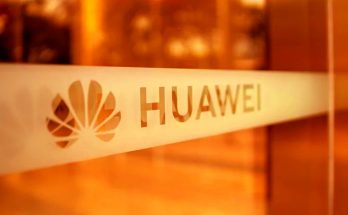When AI meets industrial expertise, even traditional sectors like cement manufacturing can become frontiers for digital innovation and sustainable transformation.
In a significant endorsement of industrial artificial intelligence, the Conch Yungong Large Model—jointly developed by Huawei and Anhui Conch Cement—was recently named a winner of the Global Call for Solutions for an Inclusive Digital Economy 2025 during the 80th UN General Assembly’s Digital Cooperation Day .
This recognition, which placed the model alongside hundreds of international submissions, highlights a growing consensus: the digital transformation of traditional industries like cement production is crucial to building stable, resilient supply chains worldwide . For an industry responsible for approximately 7% of global CO₂ emissions, this technological leap could not be more timely.
The Building Blocks of Innovation
The partnership between Conch Group, China’s largest cement producer, and technology leader Huawei represents a perfect merger of industrial expertise and technological capability. The collaboration began in April 2024 with support from the China Building Materials Federation, culminating in the official launch of the Yungong Large Model on April 23, 2025 .
Rather than applying generic AI solutions, the developers conducted deep analysis of cement production to identify over 200 promising AI application scenarios across 15 distinct sections of the manufacturing process, from raw material mining to final packaging and shipment .
Trained on Huawei Cloud’s Pangu foundation models, the Yungong model serves as what developers call an “AI operating system” for cement production, integrating central training with edge inference to create a system capable of continuous learning and optimization .
Inside the AI Model: Five Breakthrough Applications
The Conch Yungong Large Model demonstrates its capabilities across five critical areas of cement manufacturing. The table below summarizes these key technological breakthroughs:
Beyond the Factory: Global Impact and Recognition
The environmental implications of these improvements extend far beyond cost savings. For a typical clinker production line with a daily output of 5,000 tons, the 1% reduction in standard coal consumption translates to over 4,500 metric tons of reduced carbon dioxide emissions annually . To put this in perspective, that reduction equals the carbon absorption capacity of approximately 245,000 trees planted each year .
The model’s significance has been recognized at the highest levels of global industrial governance. In a July 2025 meeting with Conch Group, Zou Ciyong, Deputy to the Director General and Managing Director of the United Nations Industrial Development Organization (UNIDO), praised the company’s practices in energy conservation, emissions reduction, and digital transformation, noting that they “provided replicable experience for industry digitalization efforts around the world” .
Conch Group has actively engaged in international cooperation, participating in the 2025 International Forum on Carbon Emission Reduction and officially joining the Global Alliance on AI for Industry and Manufacturing (AIM Global) in September 2025 . These steps position the company as a voice for Chinese enterprises in global standard-setting organizations while improving the feasibility of technical roadmaps for industrial transformation in developing countries .
A Template for Traditional Industries
The building materials industry represents a critical test case for digital transformation. As noted in research from the Strategic Study of CAE, “Industrial software is a link that connects industrial design and manufacturing processes with informatization, intelligence, and digitization” . Many traditional manufacturing sectors face similar challenges: energy-intensive processes, quality control dependencies on manual experience, and complex operational environments where safety is paramount .
The Conch Yungong model demonstrates that successful digital transformation in traditional industries requires more than just technology adoption. It demands:
- Deep industry expertise to identify high-impact application scenarios
- Integration of multiple AI capabilities (prediction, computer vision, natural language processing)
- Cloud-edge collaboration for continuous learning and optimization
- International cooperation to establish replicable standards and practices
The Road Ahead
The UN award recognizes more than just technical achievement; it validates an approach to industrial transformation that balances productivity with sustainability and digital inclusion. The Global Call for Solutions for an Inclusive Digital Economy was launched by multiple UN agencies including UNIDO, UNCTAD, and the UN Office for Digital and Emerging Technologies with explicit goals of closing the digital divide and building more sustainable digital economies worldwide .
Looking forward, Huawei and Conch Group plan to continue their strategic partnership, further integrating AI with green manufacturing to optimize industry chains, improve product quality, and increase energy efficiency . Their joint success provides a compelling blueprint for how traditional manufacturing sectors can simultaneously achieve digital and green transformations—a dual imperative that grows more urgent by the day.
As industries worldwide grapple with digital transformation while pursuing carbon neutrality goals, the Conch Yungong Large Model offers a powerful case study in how deeply integrated AI solutions can transform even the most traditional sectors, creating supply chains that are not only more efficient but also more resilient and sustainable.
The convergence of AI and industrial expertise represents perhaps our most promising path to reconciling economic development with environmental stewardship. The story of the Conch Yungong model suggests that the foundations of our sustainable future may literally be made of cement.



